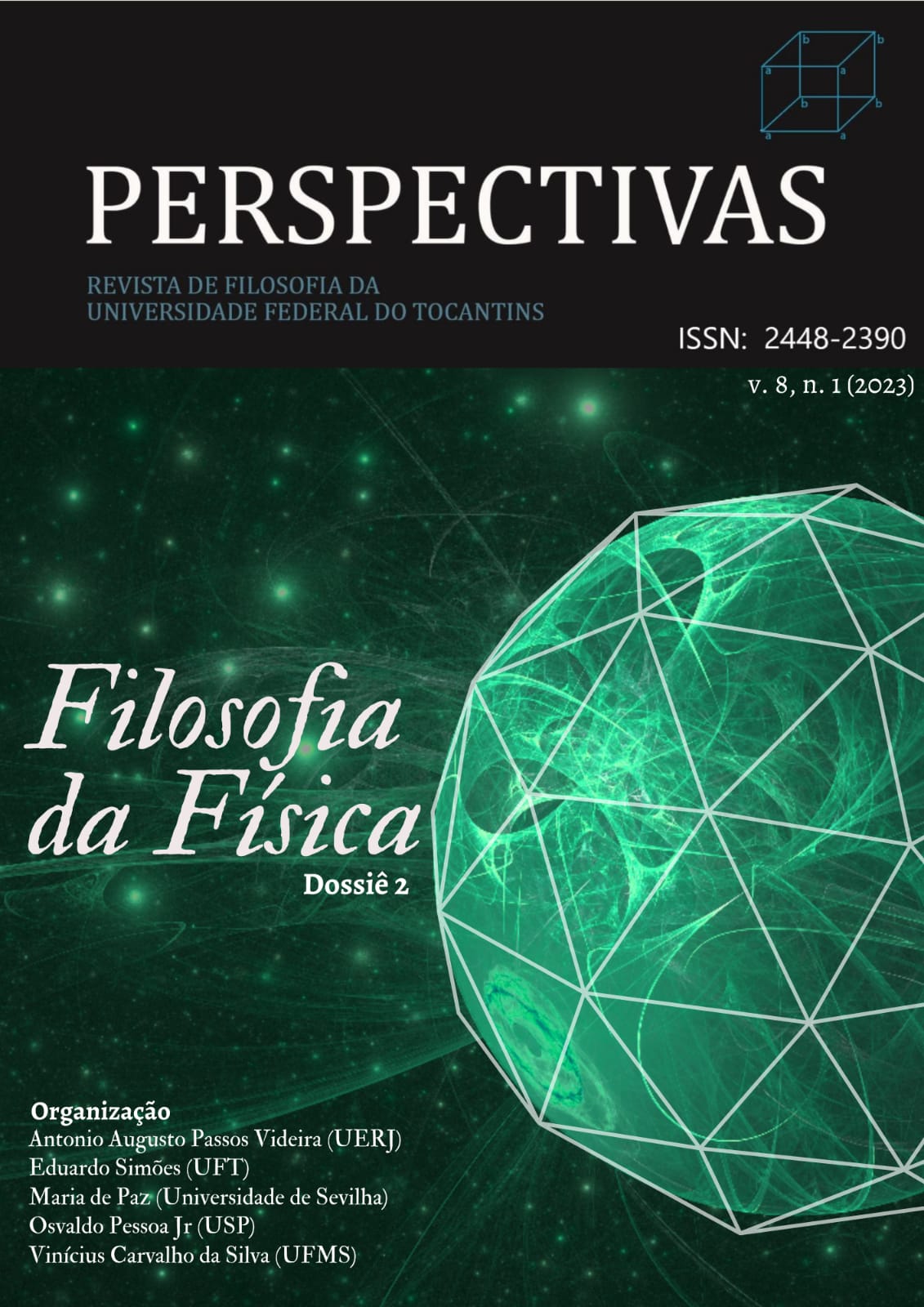Veiled reality and hylomorphic structure
DOI:
https://doi.org/10.20873/rpv8n1-70Abstract
Experimental science focuses in a peculiar, though not exclusive, way on examining the material components present in nature and their quantitative relationships. This approach has been extremely successful, even if there are gaps and perplexities to be overcome, which, by the way, are also part of the modus operandi of experimental investigation. However, if this investigation is necessary to understand the totality of nature, it is no longer sufficient, which is also corroborated by a feeling of incompleteness present in the theories. Thus, there are justifiable reasons to investigate the presence of a structure not conceptualizable only in quantitative terms called Veiled Reality by the physicist Bernard d'Espagnat, which can be assimilated to the classical transcendental composition of being and essence, provided that the latter element of the composition, essence, is equivalent to the form-matter structure, or hylomorphic structure (here, matter is to be assimilated to prime matter). Now, the existence of such a structure would reposition the philosophy of nature as complementary knowledge to that of experimental science in the sense that it would make a relevant qualitative metaphysical contribution to the search for what lies beyond the essentially quantitative, though necessary, threshold offered by the natural sciences.
References
ABBAGNANO, N. Dicionário de Filosofia. 6.ed. São Paulo: Martins Fontes, 2012.
ARISTÓTELES. Órganon. 6 vols. Trad. Pinharanda Gomes. Lisboa: Guimarães Editores, 1987.
ARISTÓTELES. Física. Trad. Guillermo Echandía. Madrid: Gredos, 1995.
ARISTÓTELES. Metafísica. Trad. Giovanni Reale/Marcelo Perine. 3 vols. 2.ed. São Paulo: Loyola, 2005.
BACCIAGALUPPI, G.; VALENTINI, A. Quantum Theory at the Crossroads: Reconsidering the 1927 Solvay Conference. Cambridge: Cambridge University Press, 2013.
BOHM, D. Wholeness and the Implicate Order. New York: Routledge, 1980.
D’ESPAGNAT, B. Veiled Reality: An Analysis of Present-Day Quantum Mechanical Concepts. Reading (MA): Addison-Wesley, 1995.
D’ESPAGNAT, B. On Physics and Philosophy. New Jersey: Princeton University Press, 2006.
FIDELER, D. Introduction. The Pythagorean Sourcebook and Library, comp. and trans. Kenneth S. Guthrie.
Michigan: Phanes Press, 1988.
FILHO, W. W. Mecânica Quântica. 2.ed. Goiânia: Editora UFG, 2014.
GLEISER, M. The Island of Knowledge. New York: Basic Books, 2014.
NASCIMENTO, M. B. Relatividade ontológica e subdeterminação: naturalismo e pirronismo. Revista doispontos, UFPR/UFSCar, v.4, n.2, 2007.
PAULI, W. Writings on Physics and Philosophy. Editores: Charles Enz, Karl Meyenn. Berlin/Heidelberg:
Springer-Verlag, 1994.
SANTOS, M. F. Teoria do Conhecimento. 4. ed. São Paulo: Logos, 1960.
SANTOS, M. F. Tratado de Simbólica. São Paulo: É Realizações, 2007.
STAPP, H. (1989). Quantum Nonlocality and the Description of Nature’. Org. James Cushing, E. McMullin. Philosophical Consequences of Quantum Theory: Reflections on Bell´s Theorem. Notre Dame: University of
Notre Dame Press, 1989.
SMITH, W. The Vertical Ascent: From Particles to the Tripartite Cosmos and Beyond. Milton Keynes (UK): Philos-Sophia Initiative Foundation, 2020.
Downloads
Published
How to Cite
Issue
Section
License
Copyright (c) 2023 Rodolfo Petrônio da Costa Araújo

This work is licensed under a Creative Commons Attribution 4.0 International License.
The Magazine is under the Creative Commons Attribution 4.0 International Public License (CC BY 4.0), according to which:
1) The authors retain the copyright and grant the journal the right of first publication, with the work simultaneously licensed under the Creative Commons Attribution which allows the sharing of articles published with the recognition of authorship and initial publication in this journal.
2) Authors are authorized to enter into additional contracts separately for distribution of the version of the work published in this journal, as long as there is recognition of authorship and initial publication in Perspectivas.
3) Authors are authorized and encouraged to disseminate published texts with proper references to the journal and its authors.





















